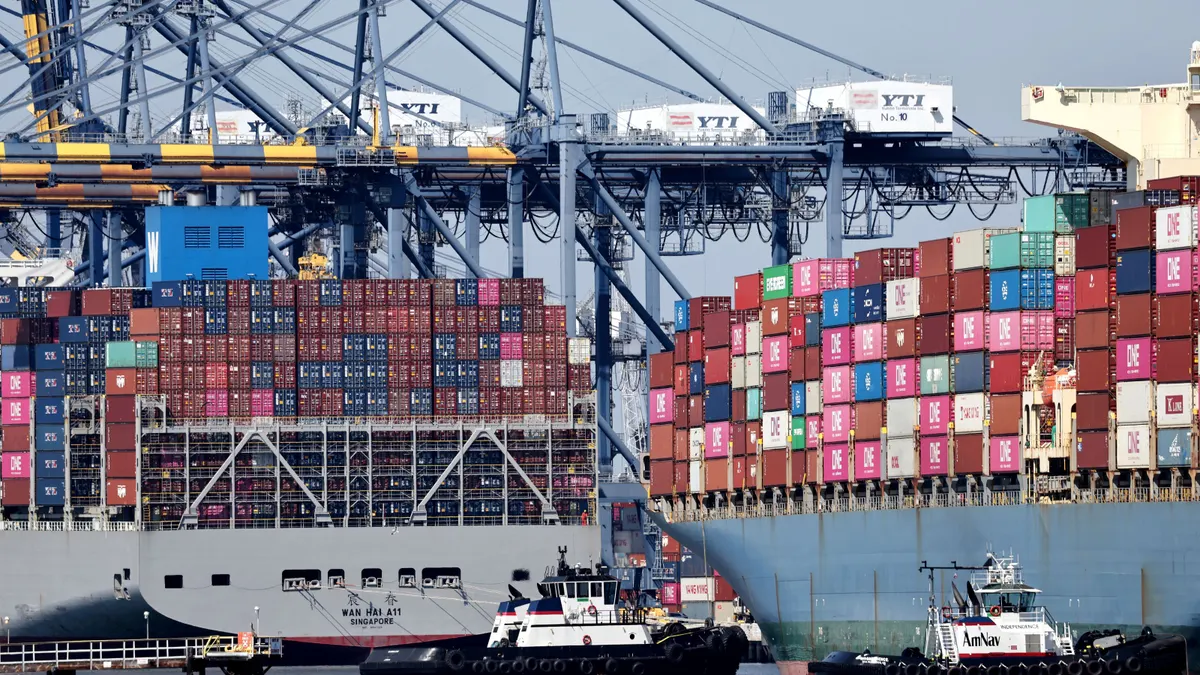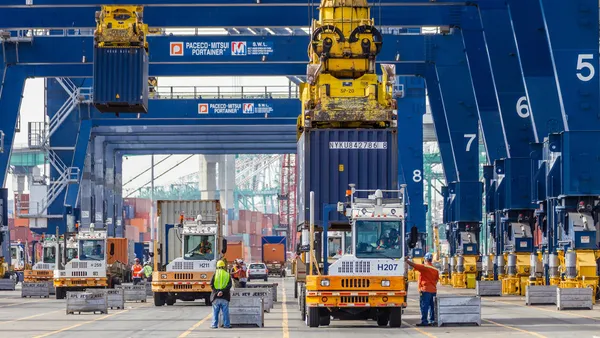Waves of cargo frontloading have created a large swell of inventory stockpiling, putting pressure on the middle mile of the supply chain, according to an Aug. 13 press briefing from the Port of Los Angeles.
The port reported its highest single-month volume of handled cargo in July as companies moved in goods ahead of the installation of the Trump administration’s country-specific reciprocal tariffs.
“Not surprisingly, much of this volume was fueled by importers hustling to bring in cargo ahead of potential tariff hikes later this month and beyond,” said Port of Los Angeles Executive Director Gene Seroka during the briefing.
In July, the port handled just over 1 million TEUs, marking the second time it has surpassed the seven-figure mark in a single month. The other instance came in May 2021. The port brought in more than 540,000 loaded imports, up 8% year over year.
The latest cargo surge continued an ongoing trend of shipper frontloading to skirt tariffs. These efforts have created a massive product stockpile, squeezing the middle mile and hiking inventory holding costs.
“So much inventory is already here, and it's really put stress on the warehousing network, and so there's a lot of costs right now that is associated with holding onto goods, and that's especially true if we look upstream,” said Zachary Rogers, assistant professor of supply chain management at Colorado State University, during the briefing.
With most of the impact felt upstream, there hasn't been as much of an effect downstream, which has helped press freight rates down and keep consumer prices from jumping severely, per Rogers. However, he and Seroka both said they expect the effects to move downstream in the near future, particularly through price increases for consumers.
"We can't expect the sort of middle mile or overseas suppliers to eat much more cost than they already have,” Rogers said. “We've sort of pulled all of our levers already, and so now you would expect to see that cost get pushed downstream to consumers."
Seroka said the inventory buildup means July’s numbers will likely be the peak for imports in 2025, noting that he does not “expect a flood of cargo” the rest of the year. However, he said August “doesn’t look that bad,” tracking for roughly 850,000 to 900,000 TEUs.
“I don't expect a big rush, but the cargo is not going to fall off a cliff in general, as indicated by the August numbers,” Seroka said.
Correction: A previous version of this story misidentified Rogers' title. He is an associate professor.















